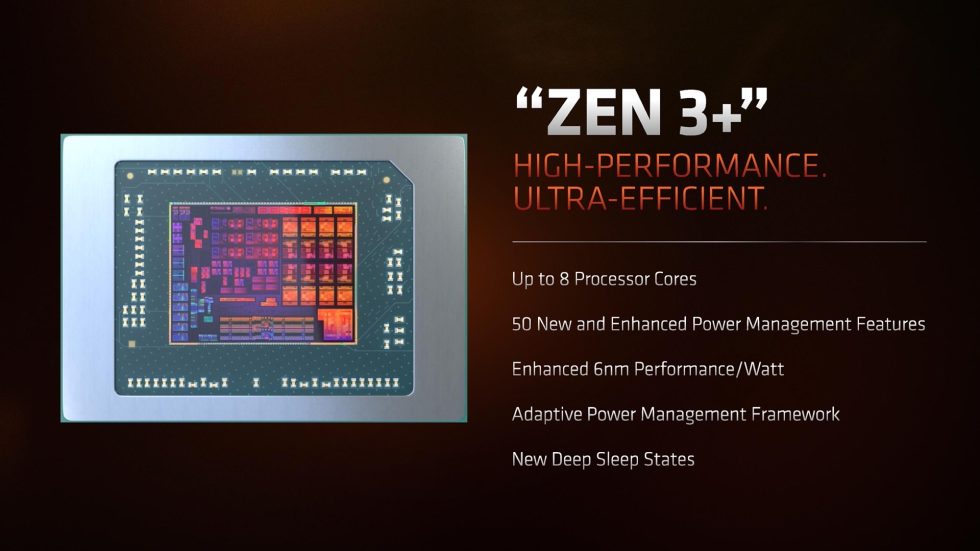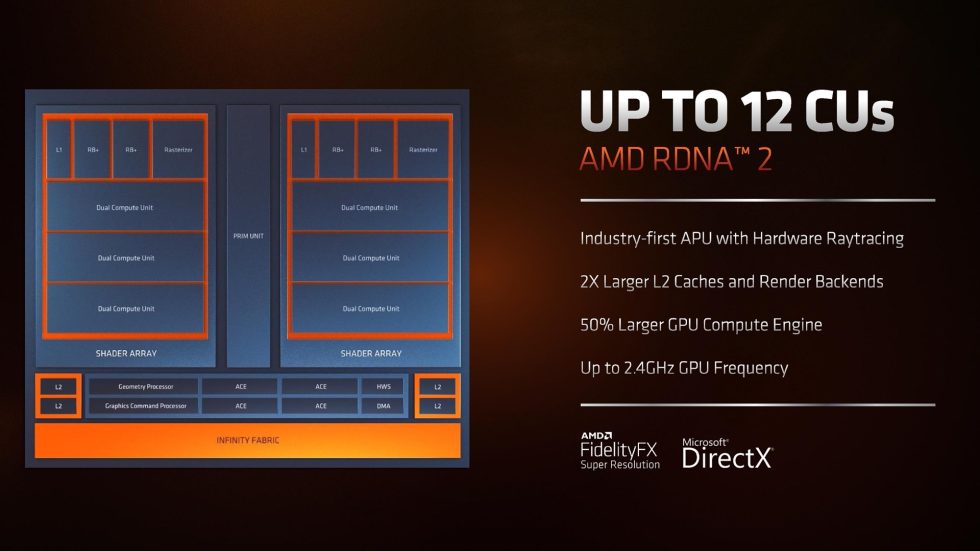AMD made small additions to its dedicated GPU and its processor lineups at its CES press conference this morning, but the biggest announcement was the introduction of new Ryzen 6000-series laptop APUs. These chips use a new Zen 3+ CPU architecture and manufacturing process, but most significantly, their integrated graphics processors trade the years-old Vega architecture for the modern RDNA2 architecture used in Radeon 6000-series graphics cards, the newest Xbox and PlayStation consoles, and the upcoming Steam Deck.
AMD says that the new chips will begin showing up in February 2022, with more laptops released “throughout the year.”

AMD
The H-, HS-, and HX-series Ryzen chips are all 35 W and 45 W processors destined for gaming laptops and workstations, and they have higher CPU and GPU clock speeds than the U-series chips. The Ryzen 5 6600U and Ryzen 7 6800U have TDPs of between 15 and 28 W, which can be adjusted by laptop manufacturers based on how much cooling they can provide—the higher the TDP, the longer the CPUs will be able to run at their top speeds. All of the Ryzen 9 and Ryzen 7 models include Radeon 680M GPUs with 12 GPU cores, while the Ryzen 5 models use weaker Radeon 660M GPUs with 6 GPU cores.

AMD
The Zen 3+ CPU architecture uses a new 6 nm manufacturing process from TSMC rather than the 7 nm process that most Zen 3 processors use. Fast SSDs will benefit from PCI Express 4.0 support, a first for AMD’s APUs. And the new chips support DDR5 RAM across the board, which will provide more memory bandwidth for the CPU and GPU alike (though there’s no DDR4 support at all, which might make these systems more expensive and more difficult to upgrade in the near term).
The integrated RDNA2 GPUs support hardware-accelerated ray tracing and DirectX 12 Ultimate, just like dedicated RDNA2 cards do. AMD says that they perform “up to 2.1 times faster” than the Vega GPUs included with the 5000-series APUs, enabling “the vast majority of games” to run smoothly at 1080p. The Radeon 600 branding is actually inherited from a much older laptop GPU lineup introduced back in 2019, which says something about how AMD is trying to position these: not up to the level of a full-fat Radeon RX 6000-series chip but totally obviating the need for the cheap, better-than-integrated tier of mobile GPUs.

AMD
Finally, the Ryzen 6000 chips all include a Microsoft Pluton security processor, intended to make Windows 10 and Windows 11 PCs more secure. Pluton is designed to standardize firmware-level security updates so they can be installed via Windows Update. Pluton also provides an emulated TPM to Windows that has the same benefits as a separate hardware or firmware TPM but eliminates the communication bus between the CPU and the TPM. This removes an attack surface that can otherwise be exploited by people with physical access to your computer.
AMD is also providing some less-exciting iterative improvements to its Ryzen 5000-series laptop APU lineup. The Ryzen 3 5425U, Ryzen 5 5625U, and Ryzen 7 5825U add 100 MHz to the peak boost clock speeds and add a bit of extra L3 cache to the Ryzen 5400U, 5600U, and 5800U, respectively. They all still use the original Zen 3 CPU architecture and Vega GPU architecture.